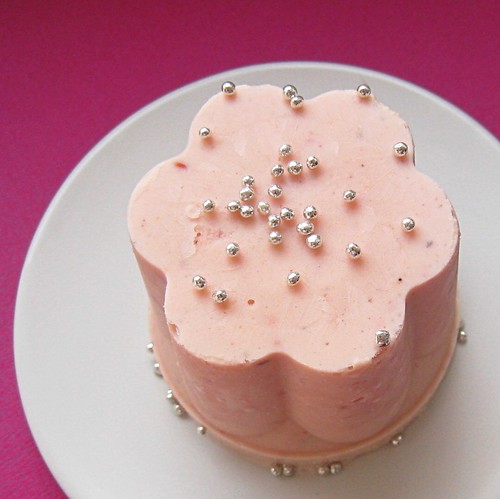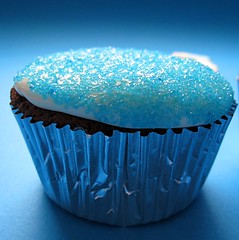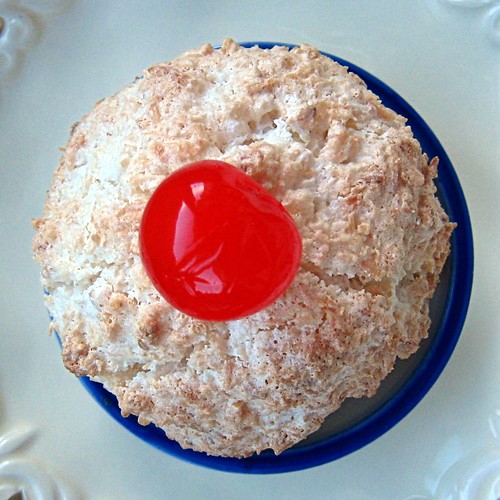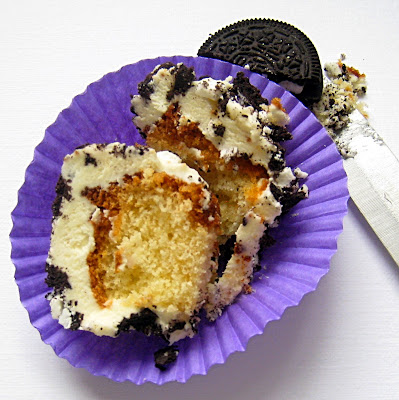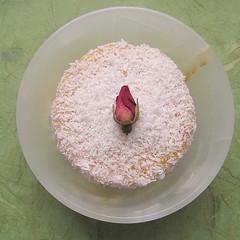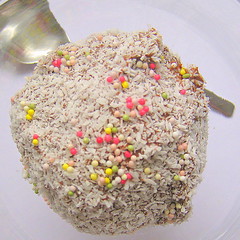 Bad light can't keep a good lamington down.
Bad light can't keep a good lamington down.
(In which Mr. P talks insecurities.)
So here we are again. It is hard to believe that a whole year has passed since we launched our first attack on Australia's least impressive and most often spoiled cake export. But it has, and we must accept it.
Shockingly, and gratifyingly, I have already received entries from several readers for
Re-Inventing the Lamington 2011, and let me tell you, they look pretty beautiful. Obviously this pleases me to no end, but it also terrifies me: my
lamingtons are all done and dusted for this year (I'll be posting them while away on a long trip), and have been eaten. I cannot preen them any more to make them beautiful. It feels like I'm a host throwing a party, waiting for guests who I know will all look smarter and less tired than I do.
Thank God for the
Kewpies. They offer something special.
The 12 months that have passed have seen me forget just how messy (but also fun!)
lamington making can be, and also that while you don't need to be particularly skilled to produce a decent
lamington, re-invented or not, you do need a certain
abount of bravery and determination. Cake cubes are fragile and glazes,
ganaches and icings are sticky, hostile environments.
Lamington production requires you to be quick as a flash when coating the cake cubes, and sparing with whatever coating you have chosen.
This is not, gentlemen (and, I suppose, ladies as well), unlike hair styling. Spending too long rubbing too much product into your hair is only going to make you, in the end, look like a pile of rubbish. Hard to swallow, perhaps, but truthful none the less. So I was especially careful when making today's
lamingtons to make sure I was speedy while dipping them in their sugar glaze. The glazed
lamington (an idea I first had for last year's
St. Clements Lamingtons) has a lot going for it - the cake absorbs moisture from the icing, keeping it super-moist, and the coconut coating forms a crisp shell. It is almost criminally delicious.
I didn't want this year to seem like a re-hash of last year (and it won't, promise), but tradition is a hard thing to shake off, so I am starting the re-inventions for 2011 with a nod to another one of Australia's uniquely famous confections - the
musk stick.
No, I had never heard of these a few years ago either, until an Australian girl at the university I was at in Tokyo bought some at the embassy and shared them with us. They are quite intensely flavoured, pink,
florally scented sugar sticks, and have a nice chewy texture. Australians call them 'lollies', which makes absolutely no sense to a Brit, but them we do live in opposing hemispheres, so differences abound.

I couldn't actually get musk sticks to make these
lamingtons, but I did get hold of some musk flavoured Lifesavers, which were actually better. I ground them up in the pestle and mortar to make a
buttercream filling for my
lamingtons, and the flavour came through brilliantly, which was nice, because pulverising them took forever and I nearly gave up.
You're probably wondering why I didn't make them circular shaped, with holes in the centre, like an actual Lifesaver. Well, I did actually try to do that, but as I was cutting the holes, it occurred to me that I was wasting cake. You can't really ask me to do that, I'm afraid. It's one of my rules.
 A torture device.
A torture device.
For these
lamingtons, I didn't make another batch of last year's
lamington base, but instead used one of the recipes from the book which is this year's first prize -
Rose's Heavenly Cakes
. It's her usual yellow cake recipe, and I baked it in a 20cm square tin. If you too want to make musk
lamingtons, or a version of the
lamington that is all your own doing, then know that a half batch of this recipe is enough. I had another 9
lamington recipes to get through, so took the decision to bake in bulk!
Musk Lamingtons
You will need:
For the cake -
5 egg yolks
200ml milk
2 tsp vanilla
250g plain flour
250g sugar
3 1/8 tsp baking powder
3/4 tsp salt
145g soft butter
For the glaze -
400g icing sugar
4tbsp hot water
200g dessicated coconut
For the
buttercream filling -
100g soft butter
200g icing sugar
1 packet musk
Livesavers, crushed (do 1/3 of a packet at a time)
- First, make the cake. Pre-heat the oven to 180°C, and grease a 20cm square baking tin.
- Mix the flour, sugar, baking powder and salt together in a large bowl using a hand whisk. This is to evenly distribute the leavening agents.
- Mix the egg yolks and vanilla with 1/3 of the milk. Add the remaining milk to the flour mixture along with the butter.
- Beat the flour, butter and milk using an electric whisk on medium speed until the mixture comes together. Then scrape the sides of the bowl, and whisk on high speed for 90 seconds.
- Add the yolks and milk in two batches, beating for 30 seconds after each addition. Pour the batter into the prepared cake tin and bake for 45 minutes, or until done.
- Cool the cake in the tin for 10 minutes before unmoulding onto a wire rack to cool completely.
- Next, make the buttercream; simply beat the ingredients together until smooth.
- Slice the cake in half, and sandwich with the buttercream. Then cut the filled cake into cubes, ready to be glazed.
- Make the glaze: mix the icing sugar with the hot water until you have a thickish icing that will adhere to the cake cubes. Put the coconut onto a plate and begin dipping the cake cubes, first into the glaze, and then roll in coconut. Work quickly, and don't be afraid to get your hands dirty. It is unavoidable!







